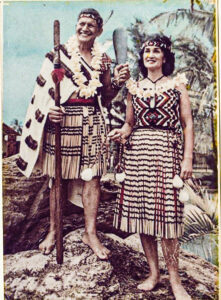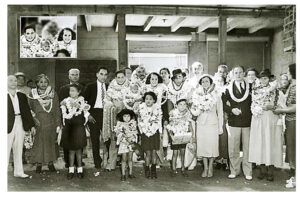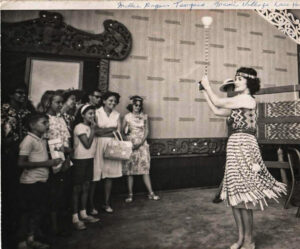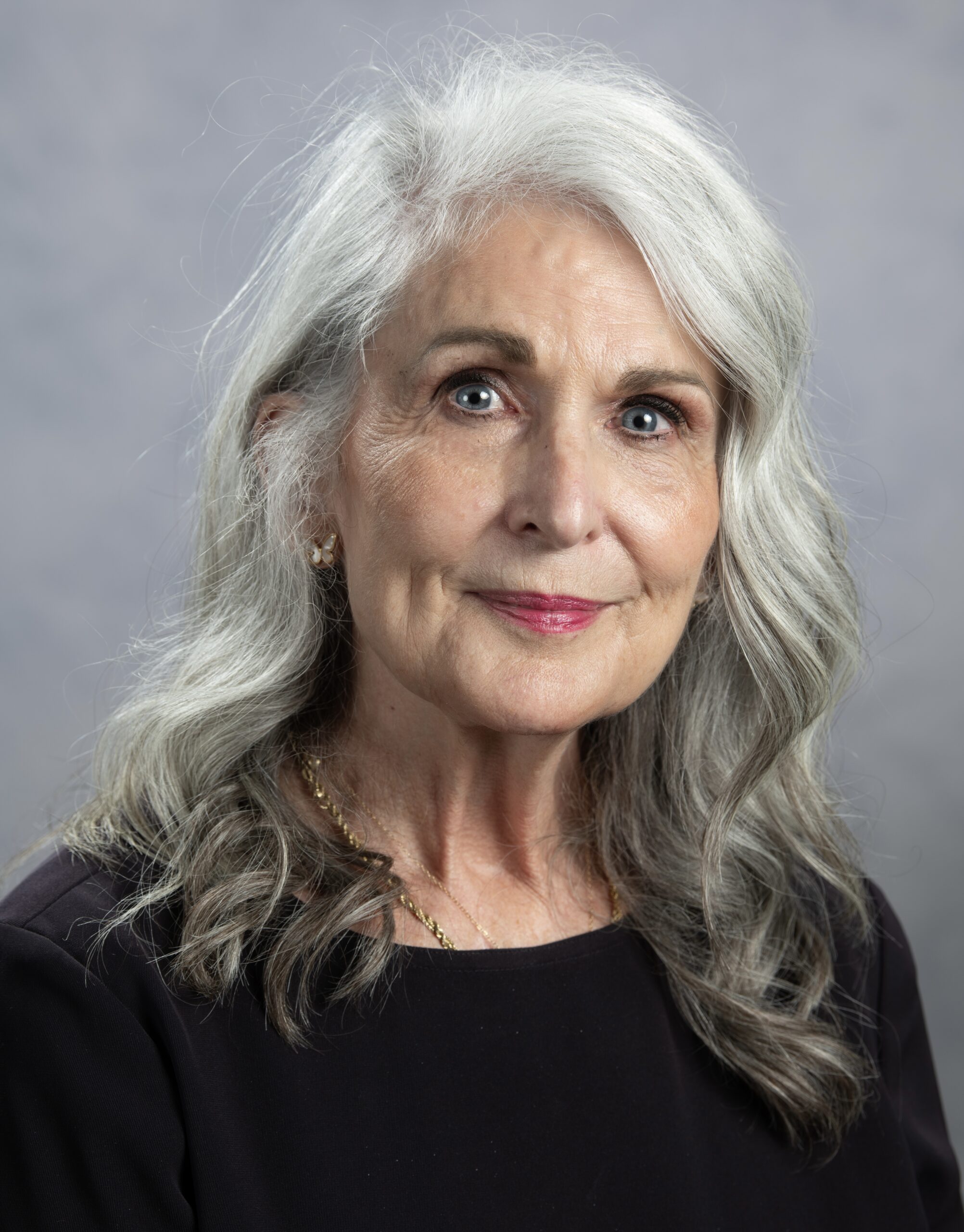
When Austin TeNgaio from Phoenix, Arizona, opened the box he inherited from his grandfather, the late Tyrone Kingi TeNgaio, he discovered a treasure trove of family history. Inside, he found pictures of his great-grandparents, Joe and Millie TeNgaio, who served as building missionaries and later as leaders and managers of the Aotearoa Village at the Polynesian Cultural Center (PCC).
“It was wonderful going through it after my great-grandmother passed away and my grandpa passed away,” Austin said.
Among the heirlooms was an original script of the 1969 short film Johnny Lingo.
“It was pretty amazing just to find this historical Johnny Lingo text tucked away, with all the cast members and pictures and everything like that. I grew up watching Johnny Lingo full-time, so just seeing that was ironic and super funny, knowing he was part of it and they saved part of this kind of historical information,” he added.
The TeNgaio family had an unexpected connection to the twenty-four-minute film that was widely circulated internationally. Joseph TeNgaio played the role of Mehi, the wise counselor.
Set in a Polynesian village, Johnny Lingo tells the story of a sharp trader who offers an unprecedented eight cows as a bride price for Mahana, a young woman that other islanders saw as undesirable. The film, shot at Brigham Young University–Hawai’i and the PCC, became a cherished classic, widely distributed and used for its moral lessons.
Interestingly, there were never actually eight cows on set — handling that many would have been too difficult. And pigs as a marriage offering would have been more culturally accurate, but the idea of a cow-based dowry was cemented by Patricia McGerr’s Woman’s Day article originally titled Miracle of Cows.
Joe TeNgaio was cast in Johnny Lingo almost by accident. During a PCC tour, a BYU film scout overheard him speaking and thought his unique accent — a mix of Cockney, Irish, and Scottish — was perfect for the part. (See note below story regarding an oral interview in 1983.)
“You didn’t notice we didn’t tell everybody — we were taking a tour with the tourists. We liked your voice,” the scout told him.
Joe and fellow actor Joseph W. Ah Quin, who played Moki, wore wigs purchased from Ala Moana Shopping Center. While they thought the disguises made them unrecognizable, friends still recognized Joe’s voice. Several friends who watched the film were initially intrigued by his role and later became members of The Church of Jesus Christ of Latter-day Saints.
The film’s influence spread beyond the LDS community. Other religious groups admired its message and began showing Johnny Lingo to their congregations.
“The Church didn’t realize it was making more publicity than any movie or film,” Joe remarked during a 1983 interview with Kalili Hunt (see note at end of story). “Other churches liked it, asked for it, and showed it to their own people.”
His participation in the film became a lasting testimony to the power of storytelling, culture, and faith.
Young Joe and Millie TeNgaio first came to Lā‘ie in 1938 after selling all they had to pay for their travels to Hawai‘i. There, they would receive their endowments and be sealed in the Hawai‘i Lā‘ie Temple. They made the over 4600-mile journey with a party of twenty-one souls — eleven adults and nine children — as it was the closest temple for the Polynesian people at that time.

(Photo courtesy of BYU–Hawaii Archives.)
Joe was twenty-four and Millie was nineteen; they were the youngest couple to have gone through the Temple at that time.
This early pattern of commitment and willingness to literally and figuratively go the extra mile is evident in the couple’s history.
In 1954, they were called on a mission for two years to help build the Church College of New Zealand in Temple View (near Hamilton, New Zealand). They were to report in ten days’ time, right before Christmas. At that time, the family, with two young children, were living in Nuhaka, Wairoa, in a newly built home on their farm.
“We looked at our crops, flowing crops of seventy thousand sweet potatoes and sweet corn and tomatoes. Presidents of the mission — President Bailiff and President Mendenhall — said, ‘The Lord will take care of those,’ Joe reminisced.
Millie added, “So we had a little prayer, and we told our children.” Later after it was announced, she said laughingly, “…we just packed our children in our car, and away we went to our mission and forgot everything about home.”
After the beautiful CCNZ campus was completed, the couple were called on another two-year mission to help build the New Zealand Temple.
They remained in Temple View after it was dedicated on April 20, 1958, until 1963, where they served as counselor to the president and assistant to the matron.
In June of 1961, Joseph and Millie — affectionately known by friends as “Uncle Joe and Aunty Millie” — were called by President Wendell Mendenhall to serve as building missionaries for the Aotearoa Island Village that would become part of the Cultural Center yet to be built in Lā’ie, Hawai’i. They remained at home in New Zealand – “Land of the Long White Cloud” – for two years to help organize and carry out the huge project. Their mission included gathering the needed materials, recruiting expert carvers, weavers, engineers and artisans.
This highly-skilled Māori group grew from its initial ten members to about fifty people tasked with creating authentic carved buildings to be assembled on the eventual site, a war canoe, gathering cultural artifacts, and tukutuku paneling,
Under the direction of Māori leader and dignitary Sir Apirana Ngata, the intricate weaving depicted on the blueprint designs began to materialize.
“I organized eighteen women working hard double time,” Millie recounted. They began to weave the traditional black and red geometric tukutuku panels made from flax and natural materials, an art form that visually imparts the values and histories of the Māori people.
The painstaking tasks continued and once the many parts of the project were finally completed, it was time to send the cultural treasures to Lā’ie. Joe TeNgaio assumed they would help oversee getting the collection ready for shipment and that would end their mission.
However, word soon came directly from the Prophet of the Church. President David O. McKay called them when they were working in the Temple, “Brother and Sister TeNgaio, we feel that you have done enough for the dead in the temple the last five years. Now we want you to comfort the living and work at the Polynesian Cultural Center,” he said.

The massive collection was transported via The Monterey Ocean liner from New Zealand to Honolulu. On May 26, 1963, the shipment—including a magnificent 65-foot carved war canoe— was loaded onto trucks that carried the precious cargo to the PCC. A great welcome ceremony was held, and prayers of gratitude were offered late into the night for the safe arrival of these ancestral treasures.
The Māori people worked tirelessly, demonstrating unwavering faith and commitment. Despite the grueling schedule of working 24-hour shifts for five months, the Aotearoa Island village was completed in record time — the shortest construction period of any village within the then 14-acre complex
Joe TeNgaio recalled the immense dedication of the Māori builders:
“We worked twenty-four hours a day, not begrudging anything,” Joe said. He also added his testimony, “I feel this day more than ever before, that there is nothing greater than the gospel of Jesus Christ! Through this assignment it has proven it and has brought great joy and happiness to our family.”
Millie personally planted many of the trees, flowers, and tropical foliage in the village with her own hands. She would awaken early at five a.m. to take advantage of the cool mornings and toil for hours, day after day, to complete the arduous task.
“All those trees there (at the island village), brother, these hands planted them. Yes, and we planted flowers. All those big trees, these hands (planted them all),” she shared.
There was nothing there on the grounds for the island village but a building when they arrived, and they wondered amongst themselves as to how they would get it all done in time for the fast-approaching October grand opening.
“But I feel the Lord was with us at that time to give us health and energy, and then the love of our work.”
Joe stated, “I must give my wife credit. I have never seen a lady work so hard in the sun and gardening. She loves anything green and has a ‘green finger.’ She loved it.”
The combined results of the dedicated artisans, craftsmen, and workers resulted in a breathtakingly authentic Aotearoa Island village, widely praised by both Māori and international critics.
Joe and Millie continued to serve at the PCC for eight more years, playing vital roles in its ongoing success. Years after retiring from service at the Polynesian Cultural Center, Joe said, “I feel this day as I have always felt in my life, but I feel it stronger than ever before, that there is nothing greater than the gospel of Jesus Christ! Through this assignment, it has proven it and has brought great joy and happiness to our family.”
Joe and Millie TeNgaio’s service at the PCC extends far beyond Johnny Lingo. Their commitment helped shape the Aotearoa Island village, preserving and sharing Māori culture and heritage with the world.
In 1963, admission to the PCC was just $1.50 for adults and $0.75 for children—a bargain price for a journey into the heart of Polynesian culture.
Johnny Lingo made a bargain, too, that had a transformative effect on Mahana, his bride in the movie, inspiring countless people across the globe to treat others with respect and kindness.
It could be said that the TeNgaios’ example of faith and dedication is an example of heavenly treasure (Matthew 6:19-21) that connects their eternal family, friends, and alumni of the PCC.
Austin TeNgaio said it best, “I could see just how much she impacted people’s lives, and she was so humble about it, too. That’s what I really loved. She was very quiet and soft-spoken, but then she would get up and do the poi balls.”
Their story is much more than a simple bargain. It inspires us as we witness their story and the commitment between a covenant- keeping couple and the Lord.
Today, their contributions live on, connecting generations through history, faith, and storytelling.
(Information for this story comes from an interview conducted by Kalili Hunt with Joe and Millie TeNgaio on September 24, 1982, as part of the BYU–Hawaii/Polynesian Cultural Center oral history project. Locate the full interview at https://legacy.polynesia.com/y under the heading Sharing Stories, subheading Legacy Reads.)

Your comment has been submitted for administrator approval.
Your comment was not saved. Please try again.
No comments yet.